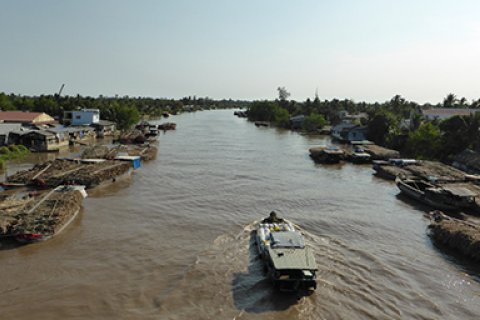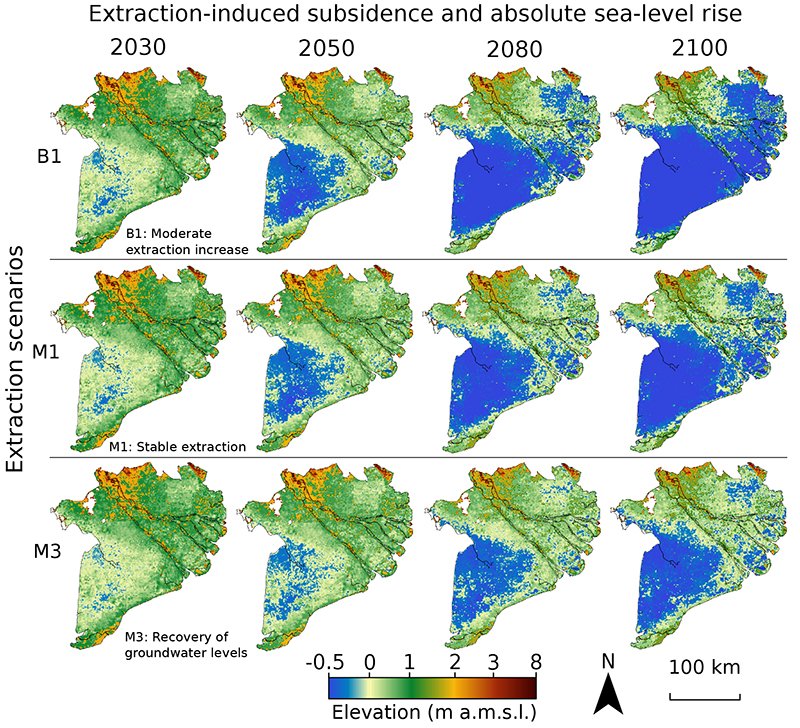Land subsidence in the Vietnamese Mekong delta
The populous Mekong delta in Vietnam is the third largest and one of the lowest elevation deltas on Earth. The delta is facing accelerating rates of land subsidence causing the land to sink into the sea at rates that are more than a tenfold of climate change-driven sea-level rise.

Within the Rise and Fall project (2014-2019), Utrecht University pioneered into land subsidence research together with Vietnamese partners and the Dutch Deltares Research Institute and Geological survey. The project uncovered and quantified several dominant natural and human-induced processes and driving mechanisms that cause the delta to rapidly lose elevation, which is predominantly caused by high rates of natural compaction of shallow sediments and increasing groundwater overexploitation.
Within this project of the Water, Climate & Future Deltas hub we continue with:
- Fundamental research to land subsidence processes in the Mekong delta to improve our understanding of the contribution of different driving mechanisms and increase our predictive capability of future subsidence.
- Providing policy-relevant subsidence projections and determine the effectiveness of different mitigation strategies to facilitate decision-making and policy change to sustainable delta management
- Contribute to the science-policy dialog in Vietnam through close collaboration with Vietnamese knowledge and governmental institutions and a growing number of international research projects active in Vietnam.

Contact
- Dr. Philip S.J. Minderhoud
Email: philip.minderhoud@wur.nl
Assistant Professor at Wageningen University & Research

